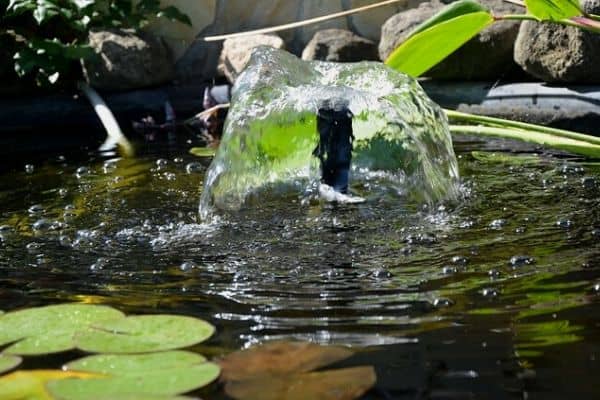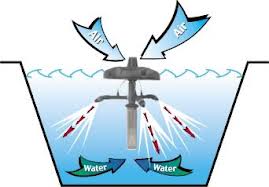Welcome to
On Feet Nation
Members
Blog Posts
Ozempic Online: A Comprehensive Guide to Purchasing Safely
Posted by mulfy on February 22, 2025 at 8:34pm 0 Comments 0 Likes
Top Content
The Ultimate Guide To Why Is Aeration Important In Water Treatment
Getting The How To Clean Natural Pond To Work
 The Best Guide To Dredging A Small Lake
The Best Guide To Dredging A Small Lake
Sunshine is likewise incredibly important to facultative lagoons since it contributes to the growth of green algae on the water surface. Since algae are plants, they need sunshine for photosynthesis. Oxygen is a by-product of photosynthesis, and the presence of green algae contributes substantially to the amount of oxygen in the aerobic zone.
The oxygen in the aerobic zone makes conditions beneficial for aerobic germs. Both aerobic and anaerobic bacteria are extremely important to the wastewater treatment process and to each other. Germs deal with wastewater by converting it into other compounds. Aerobic bacteria transform wastes into co2, ammonia, and phosphates, which, in turn, are used by the algae as food.
Indicators on How To Get Rid Of Duckweed In A Lake You Should Know
A lot of these spin-offs are then used as food by both the aerobic germs and algae in the layers above. In addition, the sludge layer at the bottom of the lagoon has plenty of anaerobic germs, sludge worms, and other organisms, which supply treatment through food digestion and prevent the sludge from rapidly building up to the point where it needs to be eliminated.
Sludge in all lagoons builds up faster in cold than in warm temperatures. Nevertheless, numerous facultative lagoons are developed to operate well without sludge elimination for 5 to ten years or more. Lagoons need to be designed by certified professionals who have had experience with them. Permit requirements and policies concerning aspects of lagoon style vary, but there are some style concerns common to all lagoons.
How To Aerate Water Without Electricity - Questions
have laws concerning the siting of lagoons, including their distance from groundwater below, and their distance from houses and businesses - barley balls algae control. Lagoons also need to lie downgrade and downwind from the homes they serve, when possible, to avoid the additional expense of pumping the wastewater uphill and to prevent odors from ending up being a problem.
Any obstructions to wind or sunlight, such as trees or surrounding hillsides must be thought about. Trees and weed growth around lagoons need to be managed for the same factors. In addition, water from surface drain or storm overflow should be kept out of lagoons, if required install diversion balconies or drains above the site.
Not known Facts About How Does Aeration Clean Water
The size and shape of lagoons is developed to take full advantage of the amount of time the wastewater remains in the lagoon. Detention time is typically the most important consider treatment. In basic, facultative lagoons require about one acre for each 50 houses or every 200 individuals they serve. Oxygenated lagoons deal with wastewater more efficiently, so they tend to need anywhere from one-third to one-tenth less land than facultative lagoons.
Lagoons can be round, square, or rectangular with rounded corners. Their length ought to not go beyond three times their width, and their banks should have outdoors slopes of about 3 systems horizontal to one unit vertical. This moderate slope makes the banks much easier to mow and keep. In systems that have dikes separating lagoon cells, dikes likewise need to be easy to keep.
The Buzz on Do Filters Aerate The Water
The bottoms of lagoons need to be as flat and level as possible (other than around the inlet) to facilitate the constant circulation of the wastewater. Keeping the corners of lagoons rounded likewise helps to keep the general hydraulic pattern in the lagoons and prevents dead spots in the flow, called short-circuiting, which can affect treatment.
Partial-mix aerated lagoons are frequently developed to be deeper than facultative lagoons to allow space for sludge to choose the bottom and rest undisturbed by the turbulent conditions produced by the aeration procedure. Wastewater enters and leaves the lagoon through inlet and outlet pipelines. Modern designs location the inlet as far as possible from the outlet, on opposite ends of the lagoons, to increase detention times and to avoid short-circuiting.
What Does Do Filters Aerate The Water Mean?
Outlets are created depending on the technique of discharge. They frequently include structures that allow the water level to be raised and decreased. Aerators, which are utilized rather of algae as the primary source of oxygen in aerated lagoons, work by launching air into the lagoon or by upseting the water so that air from the surface is mixed in (river aeration).
 Getting My Do Faucet Aerators Save Water To Work
Getting My Do Faucet Aerators Save Water To Work
Different aerator styles produce either fine or coarse bubbles, and work either on the water surface area or submerged. Subsurface aerators are more suitable in climates where the lagoon is likely to be covered by ice for part of the year. Lagoons can bring in kids, animals, and unsuspecting grownups, who may think they look like great locations to play and even swim.
How To Aerate Water Without Electricity Things To Know Before You Buy
Security training need to be provided for property owners, operators, and anybody else working with these systems. Laws in most locations require lagoons to be surrounded by high fences with locking gates and have indication plainly published. One of the benefits of lagoons is that they require fewer staff hours to operate and keep than many other systems.
Routine evaluations, testing, record keeping, and upkeep are required by local and state firms, and are all essential to guarantee that lagoons continue to https://cilliebqhu.doodlekit.com/blog/entry/20092162/the-single-str... provide excellent treatment. How typically lagoons need to be checked depends upon the type of lagoon, how well it functions, and regional and state requirements. Some lagoons need more regular monitoring in the spring and summertime, when lawn and weeds grow quickly and when seasonal rental residential or commercial properties are inhabited.
Facts About How To Aerate Water Uncovered
Amongst the most essential indicators are biochemical oxygen need (BODY) and overall suspended solids (TSS). Body is necessary due to the fact that it determines how much oxygen organisms in the wastewater would consume when discharged to getting waters. TSS determines the quantity of solid materials in the wastewater. If BOD or TSS levels in the effluent are too high, they can break down the quality of receiving waters (fish farm aeration equipment).
However due to the fact that lagoon conditions alter constantly, many tests should be carried out numerous times, and sometimes at particular periods or times of the day, to get a precise big picture of the lagoon's health. Operators can be trained to take samples and carry out some or all of the tests themselves. It is usually more practical for part-time operators of small systems to send out samples out to a laboratory to be evaluated - dredging a pond by hand - water aeration system.
The Definitive Guide for Dredging A Small Lake
These weeds take up important area that must be occupied by algae, they can stop sunlight from penetrating the wastewater, and slow mixing by the wind. Residue that collects on the water surface area ought to be removed for the very same reasons as duckweed, however also to manage smells and bugs and to avoid inlet and outlet blocking. pond desilting.
Finally, the depth of the sludge layer in lagoons must be checked at least as soon as annually, typically from a boat using a long stick or hollow tube. In the majority of lagoon systems, sludge ultimately builds up to a point it need to be eliminated, although this may take years. Efficiency will suffer if too much sludge is enabled to collect.
Examine This Report on Algae Chemicals
Duckweed, watermeal, and hyacinth that grow on the water surface area must be physically removed, typically from a boat with a tool, like a rake or skimmer. Blue-green algae-Unlike green algae, this alga is stringy and can clump, block sunshine, and cause short-circuiting. It can control lagoons when conditions are bad, when p, H is low, or when protozoa consume all of the green algae.
"Lagoons were an improvement then, and they still work well today." Located on Flathead Lake in northwest Montana, the city was incorporated in 1910 and has experienced sluggish, steady growth throughout the years. Just recently, the development rate has increased to about 5 percent annually, bringing the present population to about 4,300.
Not known Incorrect Statements About How To Clean Natural Pond
 An Unbiased View of Algae Chemicals
An Unbiased View of Algae Chemicals
Flows were just diverted from one lagoon to the other every 6 months. To accommodate growth, the city developed a new system in 1981 with 3 aerated lagoons and one polishing lagoon. Polson also began to run its own laboratory to monitor the system (aerated water). "We picked the oxygenated system based upon suggestions from our engineers, public hearings, and the low operation and maintenance
© 2025 Created by PH the vintage.
Powered by
![]()

You need to be a member of On Feet Nation to add comments!
Join On Feet Nation